SEO and lead generation are two of the most important elements for creating an effective digital marketing plan to grow your business.
Combining these two different strategies with a sensible, structured approach, can drive significant growth for your business.
I’ve laid out the simple steps you can take to increase organic traffic from the search engine results pages (SERPs) and optimise your website to become a lead generating machine.
What does this mean for your business?
More quality leads. More potential customers. More profit.
What is Lead Generation?
Lead generation is a way for your businesses to create a steady stream of sales-qualified leads who are ready to make a purchase.
Lead generation strategies focus on capturing prospects who are interested in your product or service, and converting them into a sale.
What Does Lead Generation Involve?
Lead generation campaigns are crucial to the growth and success of any B2B and B2C, especially with such fierce competition online.
It uses a number of different tactics and assets including: paid advertising, landing pages, calls-to-action, and downloadable pieces of content to persuade the customer to convert.
What is SEO?
Search engine optimisation is the process of improving the quality and quantity of website traffic to a website or a web page from search engines.
SEO strategies help websites rank higher on the search engine results page (SERP) for specific keywords or search terms.
The higher a website ranks for a specific search term, the more visitors it will receive from the SERP.
The more visitors that a website receives, the more opportunities there are to make sales or conversions.
What Does SEO Involve?
SEO involves all tactics or activities you may undertake to achieve more visibility for your web pages on Google, Bing and other search engines.
This includes keyword optimisation, crawl optimisation, creating compelling content and providing a better user experience.
The end goal of SEO is to increase your website’s visibility for your target search terms, bring in qualified visitors via search engines and keep them engaged with your content.
See how SEO helped a new niche website outrank the UK government website on a high search volume topic, and generate an abundance of leads in the process.
Introduction to SEO Resources
- How Google Search Works (Google)
- Search Engine Optimization (SEO) Starter Guide (Google)
- The Beginner’s Guide to SEO (Moz)
SEO for Lead Generation: How They Go Hand-in-Hand
SEO can skyrocket your business’ lead generation efforts by increasing the volume of relevant organic traffic to your website.
The more often your website shows at the top of the first page of Google’s search results, the easier it is for your target audience to find you and learn about your business’ offerings.
SEO allows you to optimise your website for search engine algorithms whilst also improving the experience of your visitors.
This means that once you’ve improved your organic rankings, you can ensure your website is prepped to generate as many SEO leads as possible.
Interesting Facts About SEO
Here are some reasons why SEO is one of the best ways to get more leads and, ultimately, drive business growth:
- 68% of online experiences begin with a search engine. (BrightEdge)
- SEO drives 1000%+ more traffic than organic social media. (BrightEdge)
- 60% of marketers say that inbound (SEO, blog content, etc) is their highest quality source of leads. (Hubspot)
- SEO leads have a 14.6% close rate. (Hubspot)
14 Lead Generation Strategies to Generating More Leads With SEO
You can turn your website into one of the most effective lead generation tools that work 24/7 to bring in a steady stream of leads by using the following SEO strategies:
1. Define Your Buyer Persona
Always begin with defining your buyer persona.
It doesn’t matter if you’re launching a PPC lead generation campaign on Google Ads or creating a linkable asset to drive inbound links. You must know who your target customer is!
Buyer personas are semi-fictional representations of your ideal customers based on data and research.
They help you focus your time on qualified prospects, guide product development to suit the needs of your target customers, and align all work across your organisation.
As a result, you’ll be able to attract high-value visitors, leads, and customers to your business who you’ll be more likely to retain over time.
Source: Hubspot
Defining your buyer persona allows you to create more accurate and relevant content that hones in on your ideal customer’s questions, problems, desires, frustrations and motivations.
Understanding these variables gives you insight into which keywords to target, how to build your content and, ultimately, how best to convert traffic to your website into leads.
Buyer Persona Resources
2. SEO Competitor Analysis
Your competitors’ websites are a valuable source of information that can inform every aspect of your SEO strategy. This data can help to significantly increase your website’s search engine visibility, traffic, and leads.
SEO competitive analysis involves researching the links, keywords and content of your organic search competitors in order to incorporate the most successful elements of these tactics into your own SEO strategy.
Instead of engaging in a never-ending guessing game of which keywords to target, content to create, or links to build; competitive analysis allows you to see what’s already working for others, and build upon that success.
Performing an SEO competitor analysis allows you to:
- Learn what works and what doesn’t in your industry.
- Find competitors’ weaknesses, and capitalise on them.
- Find competitors’ strengths, and replicate them.
- Understand what SEO tactics to prioritise.
- Understand the difficulty of trying to rank in your target SERPs.
Once you have this information at your disposal, you’ll be well on your way to generating more leads for your business.
In terms of which free or paid tools to use, or processes to follow, the resources below describe that in detail:
Competitor Research Resources
- The Guide to SEO Competitor Analysis (Moz)
- How to Do an SEO Competitor Analysis [Template Included] (Ahrefs)
- How to Do an SEO Competitive Analysis (Semrush)
3. Have An Active Social Media Presence
Many marketers are confused about the impact that social media engagement has on SEO.
Google has never stated or acknowledged that social media engagement signals are search ranking factors, but data from Search Engine Journal shows that social media marketing can help your website rank better.
The data shows a very high correlation between ranking position and social signals, with the top-ranking pages on Google possessing significantly more social signals than the websites that don’t perform as well.
It could be argued that social media has an indirect impact on SEO.
Why?
Well, the more of a social media presence you have, the more likely you are to attract those who will link to you.
Let’s say you’re a blogger who uses social media to attract more visitors and leads to your website. In this case, the actual visits to the website aren’t as important to SEO as the potential links you might earn from people who see your content and link to your content from other websites.
Therefore, make sure you maintain active social media channels to help boost your SEO lead generation.
Social Media and SEO Resources
- The Complicated Relationship Between Social Media and SEO (Hubspot)
- Social Media SEO: 7 Ways Social Media Can Improve Your SEO Results (Semrush)
- How Social Media Helps SEO [Final Answer] (Search Engine Journal)
4. Perform An SEO Content Audit
Before we get into your content strategy for lead generation and SEO, it’s important to firstly take stock of all the existing content on your website to assess its strengths, weaknesses and opportunities.
An SEO content audit is an actionable inventory of indexable content that’s organised in ways to better determine what to consolidate, what to remove, what to improve upon, and what to leave as-is.
By the end, you’ll be able to:
- Pinpoint what pieces of content performed the best on your site.
- Determine what type of content your ideal lead prefers.
- Locate and plug content gaps where visitors may be falling off within your sales funnel.
- Gather ideas for future content pieces.
- Discover pages with high impressions, but low conversions.
- Get rid of content that no longer aligns with your business or audience
The resources below walk you through how to perform an SEO content audit in detail.
SEO Content Audit Resources
- The Step-by-Step Guide to Conducting a Content Audit in 2022 (SEMrush)
- Conducting an SEO Audit: 6 Things You Might be Overlooking (Screaming Frog)
- How to Do a Content Audit in 2022 (Ahrefs)
5. Create An SEO Content Strategy
Now it’s time to decide what content you’re going to show your target audience.
Knowing what content to write or produce can make or break your quest to generate quality leads, so it’s vital to know exactly what your audience is searching for.
As a SEO consultant at a busy SEO agency, I use a variety of paid SEO tools to uncover insights to assist in formulating a content strategy.
However, the simplest tool that you can use to get an idea of what content you’ll need to appear for your target search terms is Google itself.
Start by searching for a couple of keywords closely related to your business. For example, if you’re a hairdresser with a salon in Manchester, you could try ‘hairdresser manchester’.
Ignore any sponsored listings or ads and scroll down to the organic listings. Click through on each of the top 3 pages one by one, and take notes of the types of pages that you see.
Your content strategy will be informed by the keywords you end up targeting and the types of pages required to rank for those keywords.
Once you’ve performed your keyword research, you’ll be able to map out your keywords to a number of templates/page-types, which you can then use as a blueprint to plan out your content with.
SEO Content Strategy Resources
- How to Create an SEO Strategy for 2022 (Hubspot)
- How to Build the Right Content Marketing Strategy for SEO Growth (Moz)
- 7 Ways to Easily Set up an SEO Content Strategy (Search Engine Journal)
6. Carry Out Keyword Research
Keyword research is the bread and butter of on-page SEO. The power of keyword research lies in better understanding your target market and how they are searching for your content, services, or products.
Keyword research provides you with specific search data that can help you answer questions like:
- What are people searching for?
- How many people are searching for it?
- In what format do they want that information?
These days, there are an abundance of keyword research tools to choose from, which you can use to find the relevant keywords that are going to drive more traffic, but leads too.
The keyword research tools that I use on a daily basis usually consists of SEMrush (paid), Ahrefs (paid) as well as good old Google search (free), combined with any number of SEO/keyword research browser extensions to provide me with keyword data at a glance.
There’s no shortage of great free keyword research tools, such as MozBar, Keyword Surfer and Google Keyword Planner.
Google’s Keyword Planner shows hundreds of keywords and long-tail phrases, as well as the number of searches, making it easier for you to generate a list of keywords that are ranking.
Once you’ve located a batch of potential targets, you’ll need to select the ones you’re going to use.
Keyword Research Resources:
- How to Do Keyword Research for SEO (Ahrefs)
- The SEO Keyword Research Master Guide (Moz)
- The Ultimate Keyword Research Guide for SEO (Semrush)
7. Select Target Keywords That Turn Visitors Into Leads
You’ll now need to select your target keywords from the batch of potential keywords you’ve found through your keyword research.
You should make sure to keep your buyer persona in mind and also consider the search intent of the keywords.
Selecting the keywords that your buyer persona will use when searching within your niche is crucial to formulating content that turns your website visitors into leads.
Certain types of keywords will be related to different stages of the buyer journey. For example, navigational searches (‘where can I find…’, ‘who sells…’ type queries) may be searched by users in the research phase.
Whereas ‘buy [brand and model name]’ type-searches are inherently commercial and clearly show that the searcher is ready to make a purchase.
You may wish to select keywords from across the buyer journey, so that you can usher users through your website and nudge them into converting.
Keyword Research Content Strategy Resources
- The SEO Keyword Research Master Guide – Moz
- Keyword Research Course with Greg Gifford – SEMrush
- How to Do Keyword Research for SEO – Ahrefs
8. Explore Different Types Of Content Formats
Different types of content are suitable for meeting different types of search intent.
In order to give your website the best opportunity to rank for your chosen search terms and generate leads for your business, you’ll need to explore using a range of content types to meet the search intent of the keyword and provide searchers with what they’re looking for.
For example, when searching within the industrial fans and motors niche, you may find that a search for ‘industrial fans’ delivers a search results page that is dominated by ecommerce websites.
Meanwhile, a search for a related term ‘axial impellers’ shows results that are structured more as guides, offering information as opposed to products or services.
When performing keyword research and planning your content, you should pay close attention to what types of content are currently ranking.
For example, you might notice that the top-ranking page features useful FAQs, whilst another page may show product listings.
Use your notes to make a wish list of features and content-types that will make up your own competing page. You can do this for each term you’re targeting.
9. Optimise your website for conversions
If you have squeezed every last drop out of the tactics mentioned above, you would have certainly succeeded in generating more qualified traffic to your website.
Now it’s time to seriously flex your lead generation muscles and turn as many as possible of those visitors into leads.
These conversion rate optimisation techniques will help improve user experience, boost engagement and increase conversions. This is how you can transform your website into the ultimate lead generation tool:
Placing compelling calls-to-action on service pages.
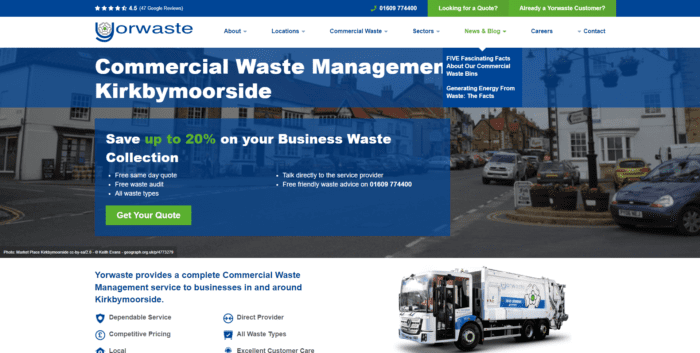
Adding downloadable pieces of content that satisfies search intent on high performing articles.

Creating internal links to other relevant pieces of content.

Include keywords and long-tail phrases that satisfy different stages of the customer journey.
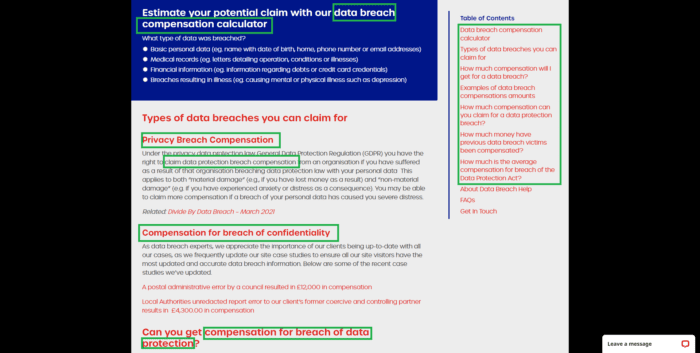
Utilise landing pages to increase conversions.
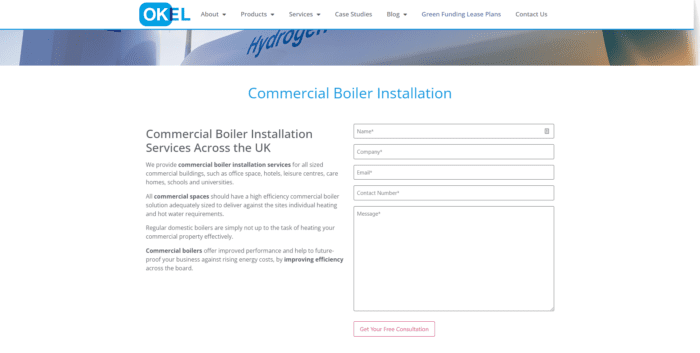
SEO Resources for Conversion Rate Optimisation
- Conversion Rate Optimization (Moz)
- Everything You Need to Know About Conversion Rate Optimization (CRO) (Search Engine Journal)
- Improve Conversion Rates By Optimizing Lead Generation Forms (Gartner)
10. Promote And Manage Customer Reviews
Customer reviews positively impact SEO. An abundance of positive reviews act as a strong signal to Google and other search engines that your website (as well as your local business if we’re talking about local SEO) is trustworthy and authoritative.
Reviews are also an essential part of the awareness stage and how your prospective customers search online. They allow your business to become more visible on Google’s local pack results and help to establish an online presence and reputation.
Here are some key pointers behind utilising customer reviews effectively:
Encouraging reviews
Most businesses with an online presence can benefit from encouraging reviews of their products or services.
Ideally, reviews should be left on a business’ Google Business Profile, however not all businesses are eligible for one. You can also collect reviews directly on your website, or via a 3rd party provider (such as Truspilot or Trustist).
Ecommerce stores can implement automated emails that follow up after customers orders have been fulfilled.
Service businesses can reach out to customers after a job has been completed via email, either manually or using an automated tool (such as Gatherup).
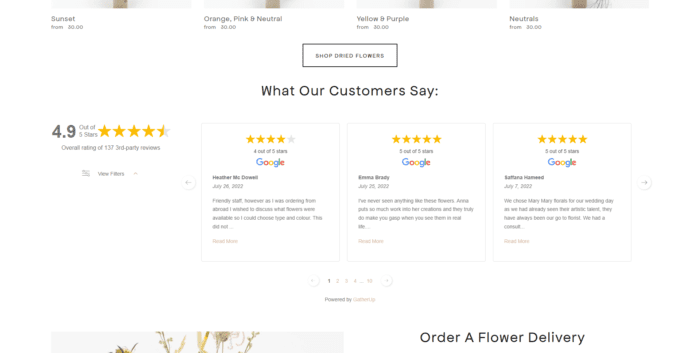
Responding to reviews
Responding to reviews is an important part of this process. Positive reviews should be responded to with a simple ‘Thank you’ message.
Meanwhile, negative reviews should always be handled promptly, with care taken to understand the nature of the customer experience behind the review.
Ideally, all negative reviews should be managed and resolved, so that the customer leaving the review can either amend or remove the initial comment.
Repositioning
Responding promptly to either negative or positive reviews helps reposition your business as one that holds itself accountable to its actions and has its customers interests in mind.
Google pays attention to how you engage with your customers, and your reputation in regards to the quality of the service or product that you provide.
There’s a specific section in Google’s Quality Rater Guidelines which mentions how reviews are used to measure the reputation of a business:
“User reviews are often helpful sources of reputation for websites that offer products or services. You may consider a large number of detailed, trustworthy positive user reviews as evidence of positive reputation.”
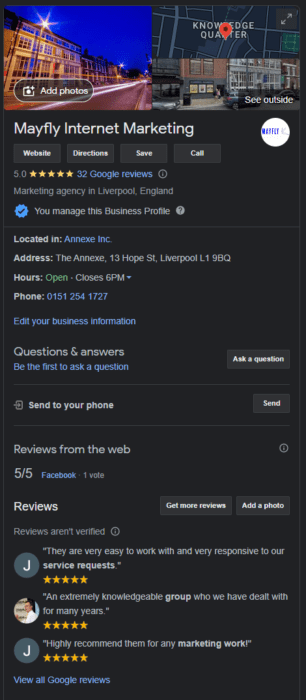
Promote Google Reviews
Once you have your Google Reviews, you should do your best to promote them. Review content should be prominently placed on any page of your website that requires you to extoll your reputation, including category pages, product pages, home page or about page.
You can also promote your Google Review on your social media or within paid advertising campaigns.
Review schema can also be implemented so that your star-rating can be displayed within the search results pages, making your result stand out from the competition and improving click-through rates.

Why are Reviews for SEO and Lead Generation important?
- 13% of consumers will do business with a company with a 1-2 star rating. (Moz)
- 89% of consumers are ‘highly’ or ‘fairly’ likely to use a business that responds to all of its online reviews. (Bright Local)
- Comparing 2022 survey results to 2021 – The amount of people who only pay attention to reviews left in the previous two weeks has dropped from 50% to 22%. (Bright Local)
SEO Resources for Reviews
- Local Reviews & Customer Ratings [Google SEO] (Moz)
- How Customer Reviews Can Improve Your SEO Efforts (Search Engine Land)
- How Do Online Reviews Affect Local SEO? (BrightLocal)
11. Improve Your Page Experience
While much of what you have read and will continue to read in this article are related to improving content and relevance, I couldn’t finish this article without mentioning page experience.
Page experience and site speed are sometimes used interchangeably by marketers, but site speed is just one element of the entire page experience signals.
There are many more elements to optimise your site for here than just how fast your page loads.
Page experience is a set of signals that measure how users perceive the experience of interacting with a web page beyond its pure information value, both on mobile and desktop devices. It includes Core Web Vitals, which is a set of metrics that measure real-world user experience for loading performance, interactivity, and visual stability of the page. It also includes existing Search signals: mobile-friendliness, HTTPS, and intrusive interstitial guidelines.
Source: Google
How Page Experience Affects Ranking
While page experience is important, Google still seeks to rank pages with the best information overall, even if the page experience is subpar. Great page experience doesn’t override having great page content. However, in cases where there are many pages that may be similar in relevance, page experience can be much more important for visibility in Search
Source: Google
Optimising For Page Experience Resources
Google’s resource on Understanding Google Page Experience lists some helpful resources on optimising for page experience. I have also listed some great third-party resources should you wish to explore this topic in more detail.
The better an experience you can provide for users, the more likely they’ll want to convert on your site.
- Page Speed (Moz)
- Page Speed and SEO – The Complete Guide (Backlinko)
- Page Speed as a Google Ranking Factor: What You Need to Know (Search Engine Journal)
12. Local Business? Use These Local SEO Strategies
If you have a local business, then you can benefit greatly from implementing local SEO strategies.
What is Local SEO?
A website gives your business the opportunity to reach audiences around the world. On the other hand, local SEO is the practice of improving your online presence to get more business from local searches. These searches take place on many search engines, but local SEO focuses on optimising for Google users.
Local SEO Strategies
There’s an abundance of helpful local SEO resources that I’ll reference just below so you can dive into them in your own time, but you ought to start with the following:
Build Quality Local Citations
Local citations are mentions of your business name, address, phone number, and website (NAPW) on sites besides your own. The most popular place to build local citations is on online business directories.
Being featured on industry-specific sites has more SEO value than being present on the more generic ones.
When Google can see that the same information exists across a wide range of authoritative websites, then this trust can be passed on to your business website.
Also, you’ll be getting potentially beneficial backlinks from each of the directory sites that you’re listed on.
Optimise content for local search: Use local keyword data to optimise.
Generate positive reviews: Studies show that 72% of customers say they use Google reviews to find businesses.
Optimise Your Content for Local Search
All local businesses, whether brick and mortar stores, or service area businesses, can make use of locally optimised content to improve their visibility for locally targeted searches.
The basic requirements for local optimisation is featuring a consistent name, address and phone number across all relevant place on your website (ie. footer, about page, contact page, local landing pages).
Next, you may want to consider listing the places that you serve in key parts of your website. If you deliver your product, you may want to include the areas that you deliver to in a series of FAQs.
Local landing pages are another tried-and-trusted method of improving visibility for locally-targeted search terms. Target different cities, regions, counties or neighbourhoods – dependent on the search volume for your niche. Just make sure not to create doorway pages that don’t benefit the user.
Local SEO Resources
- Local SEO: The Complete Guide (Ahrefs)
- The Essential Local SEO Strategy Guide (Moz)
- What is Local SEO? (Brightlocal)
13. Start Link Building (Or ‘Link Earning’)
Link building is the process of acquiring hyperlinks from other websites to your own. Links help users to easily navigate between pages on the web. They also help search engines to crawl between individual pages on your site, as well as between entire websites on the internet.
Within SEO, link building plays an important role in driving greater visibility via search engines, especially in competitive industries. When combined with strong technical SEO foundations, and a great user experience, link building can be very effective at driving more organic traffic and leads.
Link building is an important element in your overall SEO lead generation strategy, but it’s important to do it credibly if you want to get positive results from your efforts.
For instance, you must never buy links and only link to high-quality sources that will help improve the ranking of your own domain. Manual outreaching to bloggers for guest posting and link placements can still be a useful practice in some circumstances.
If you want to get started on building – or even better – earning powerful links to your site, you’re in good hands with any of the link building resources below.
Link Building Resources:
- Link Building for SEO: The Definitive Guide (2022) (Backlinko)
- The Beginner’s Guide to Link Building (Moz)
- The Beginner’s Guide to Link Building (Ahrefs)
Common SEO Mistakes to Avoid
I’m not going to list every possible pitfall here as that’s outside the scope of this article. This is perfectly summarised by Alexander Kesler in his Search Engine Journal article ‘The 10 Most Common SEO Mistakes to Avoid‘.
Having witnessed first-hand many of the black-hat SEO tactics included in this list in the earlier days of my SEO career – as well as their consequences – my personal recommendation is to steer well clear of them:
- Buying poor quality links from directories and link farms
- Keyword stuffing
- Article spinning
- Creating irrelevant content
- Publishing others’ content and passing it off as your own
- Duplicate content
- Many other forms of black-hat SEO
- Not linking to other content on your own website
- Not linking to other credible sources of content
Conclusion
Lead generation and SEO are two strategies that go hand-in-hand.
From carefully defining your buyer personas to performing regular content audits, SEO can support and drive lead generation for your business, allowing you to experience significant growth in your online business.

